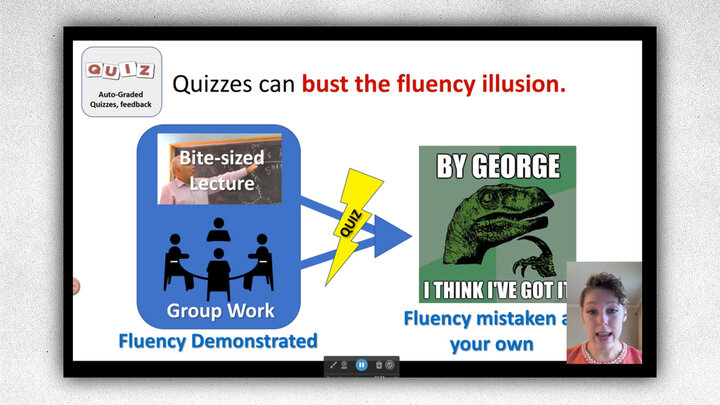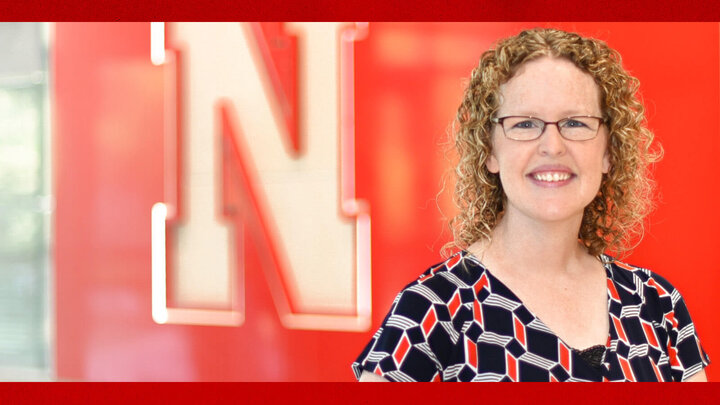One evening while helping his son with homework, Jeyam Subbiah marveled at how well the narrated screen recordings from Kahn’s Academy helped his son understand how to work problems and thought there should be such a thing for his students. Shortly thereafter, Subbiah, Morrison Distinguished Professor of Food Engineering in the departments of biological systems engineering and food science & technology, made his first videos using the capabilities of his Microsoft Surface Pro 3, putting them on YouTube to maximize ease of access.
Already a user of active learning techniques called peer instruction, where students attempt to convince their peers of correct answers to questions, and just in time teaching or JiTT, in which lectures are modified in response to formative assessment, Subbiah still sought ways to increase student engagement during class sessions. To investigate the possibilities and identify a strategy appropriate to his aims, he consulted with Tareq Daher, Instructional Design Technology Coordinator for the college of engineering. Together, they flipped the course, devising a pedagogical strategy and identifying appropriate technologies to address two primary problems impacting student learning in his classes.
First, students in his large-enrollment course literally couldn’t see what he wrote when he worked problems during lectures. By setting up an Adobe Connect meeting on his Surface, and then sharing his screen, Subbiah was able to work problems on the fly, during his presentation. To project his slides and annotations to the lecture hall screens, he logged the classroom computer into his meeting. By using the two computers and the Adobe Connect meeting room, students were able to see both slides and annotations at a legible size and Subbiah was free to move around the hall and engage with students.
Second, as faculty know, students often neglect to do readings or other activities before a lecture session and arrive unprepared. Subbiah began to use recorded narrated screen captures as part of a “front-loading” package. In addition to the videos, the package included readings and activities followed by a quiz, which not only encouraged students to fully interact with content, but helped Subbiah understand which concepts were most troublesome for his students. The quiz also contained a short-answer question asking students which material they understood the least. He would then modify his lecture to go into these topics more deeply. After covering these topics, the remaining time was used to work problems, discuss content-relevant current events, and provide a short introduction to what the class would learn next. In short, the narrated screen capture videos helped Subbiah take courses that were already using effective active learning techniques in the forms of peer instruction and JiTT and move them to a fully flipped model.
As expected, student response was mixed, but generally positive.
According to the feedback Subbiah received, it seemed that the more organized, higher performing students liked it, but that some of the less organized, lower performing students experienced increased frustration during class sessions. Subbiah hypothesizes that this may be because the class session in the flipped format becomes more demanding and therefore less amenable for students unprepared to participate.
Students learning English also found the techniques helpful. They were able to download the problems worked in class in addition to being able to repeatedly watch and listen to the videos.
Overall, student evaluation of the approach supported continued use of the instructional techniques and flipped course design. For example, 40% of students said the flipped approach provided “equal or similar learning experience,” but 42% said flipped was a better learning experience. More than half the students believed they were better engaged in class activities and that after participating in this course, that they would be more likely to attend other flipped classes offered in the science or engineering programs.” Consequently, although the approach required an up-front investment of time, now that a library of content is established, the commitment is more akin to a traditional approach.
For other faculty considering the use of narrated screen captures, Subbiah offers the following tips:
- Start with little things, don’t try to do the whole course at once
- Keep the videos short, under ten minutes, and focus on key concepts
- Make the videos available before exams. More students will use them and see how helpful they can be.
- Use a noise-cancelling microphone. “In my first videos, students could hear the tap of my pen on the Surface screen and they found it so annoying that they started watching the videos with the sound off,” Subbiah said.
- Show students how to adjust video speed. “Some students think I speak too slowly, others say I speak too quickly,” he added.
Closing out the conversation, Subbiah said, “To improve learning, the culture and student expectations must change.” He said that as more faculty started to use these types of techniques, students would come to expect the work outside of class and preparation for the in-class session would become routine.




